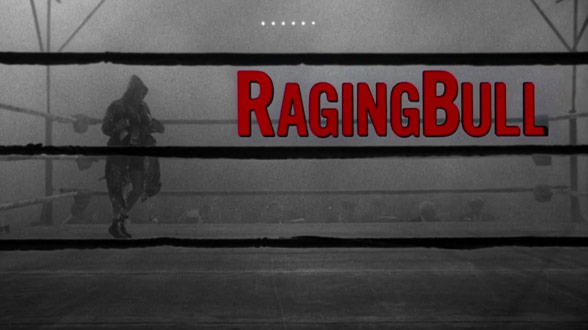
The iconic film “Raging Bull”, released in 1980 and directed by Martin Scorsese, has an unflinching realism and brutal honesty to it, captured in a surreal black-and-white world of anger, violence and redemption. Based on the real-life story of middleweight boxer Jake LaMotta, the film is less cinema and more like a documentary disguised as a movie.
“Raging Bull” has landed on the short list as one of the greatest films ever made and many film critics and fans agree that it’s the best film in Martin Scorsese’s storied career. While many consider this film to be the director’s finest effort as a filmmaker, it’s also a film for many years he refused to make.
Originally, “Raging Bull” was a passion project of Robert De Niro, who first read the autobiography of the boxer while filming “The Godfather: Part II”. The legendary actor became obsessed with bringing the story to the big screen and knew Scorsese was the only director right for the project.
At first Scorsese turned down the offer to direct the film; because he wasn’t a big fan of sports, he didn’t warm up to the material. It wasn’t until years later while battling a drug addiction and with his career in question, he ended up hospitalized. After a visit from De Niro, Scorsese was determined to make the necessary changes in his life and make a comeback career wise. That’s when Scorsese realized the theme of redemption was the most powerful thing about the story of the middleweight boxer and agreed to finally make the movie.
Reuniting with Paul Schrader, who wrote a screenplay draft for “Raging Bull”, the three men who made “Taxi Driver” one of the defining movies of the 70s were working together once again. Watching the film, you can’t help but get the impression that Scorsese was a director who didn’t care if he would ever make a another film again.
“Raging Bull” has a certain honesty that only a few other films in the history of cinema could match. Like the boxer in the movie, the director himself would achieve the redemption he sought, because after the release of “Raging Bull”, which many consider Scorsese’s first true classic, the director would go on to direct other great films. However, “Raging Bull” announced to the world that Martin Scorsese was one of the greatest directors of all time.
1. Flawed yet compelling characters
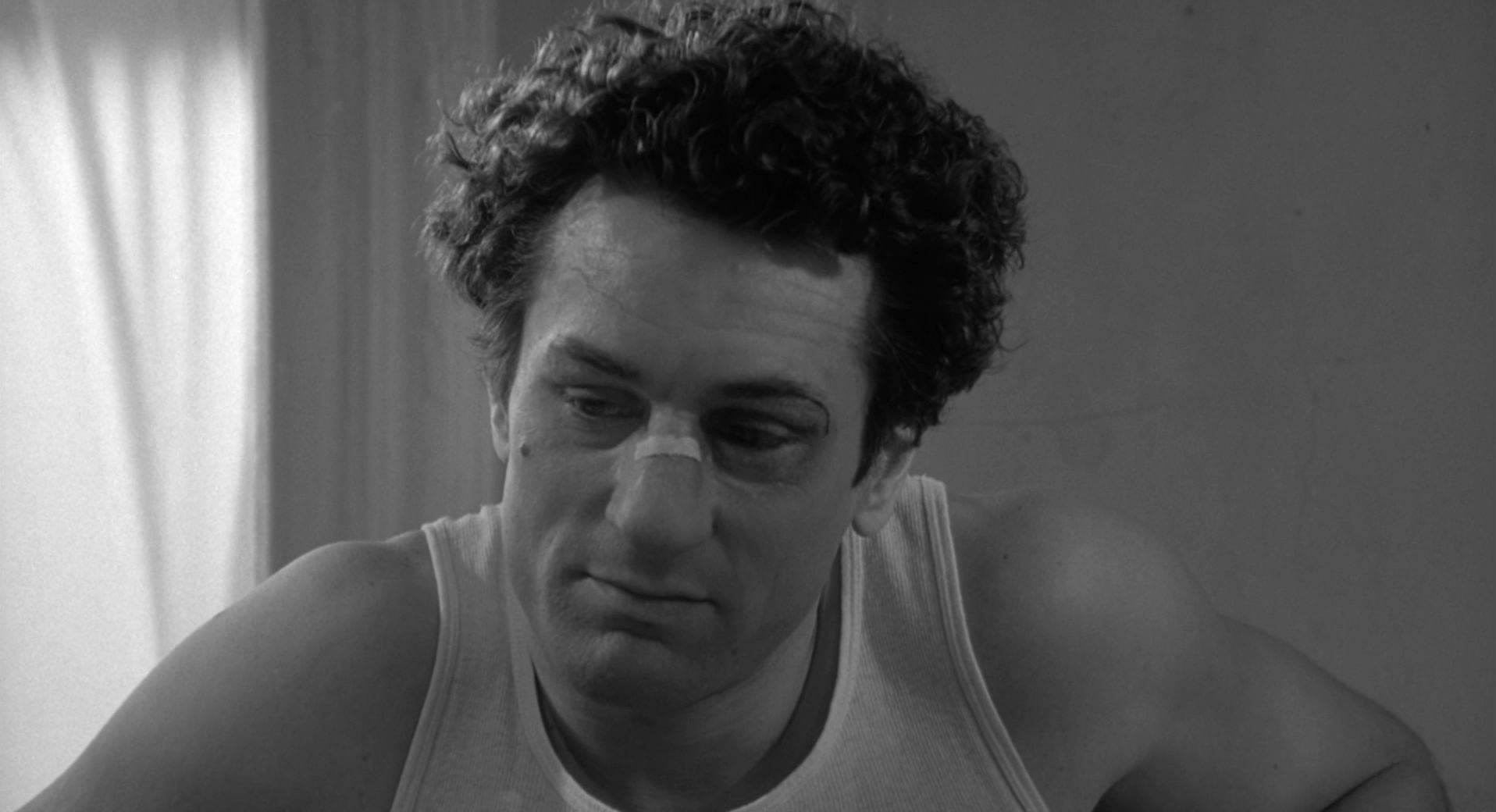
Not only is Jake LaMotta not a saint, at times he’s a pretty much an unlikable character. Joseph McBride, the film critic for Variety, had this to say about “Raging Bull”: “Martin Scorsese makes pictures about the kinds of people you wouldn’t want to know.” And this fact is what makes the characters in the film so compelling – they’re prone to violence, they’re foul-mouthed and unruly, and they’ll attack anyone, including their own family members.
Scorsese takes these flawed individuals, portrays them as human, and shows their motivations and insecurities. These chaotic people capture our sympathy because the film speaks a universal truth – everyone is flawed one way or another.
This truth makes LaMotta’s journey for redemption a relatable experience for the viewer, because deep down no matter your standing in life we all want to become better versions of ourselves. The characters in the movie are flawed and dysfunctional, but their travels and struggles through life is a compelling narrative, making “Raging Bull” a film one won’t easily forget after watching it.
2. Superb acting
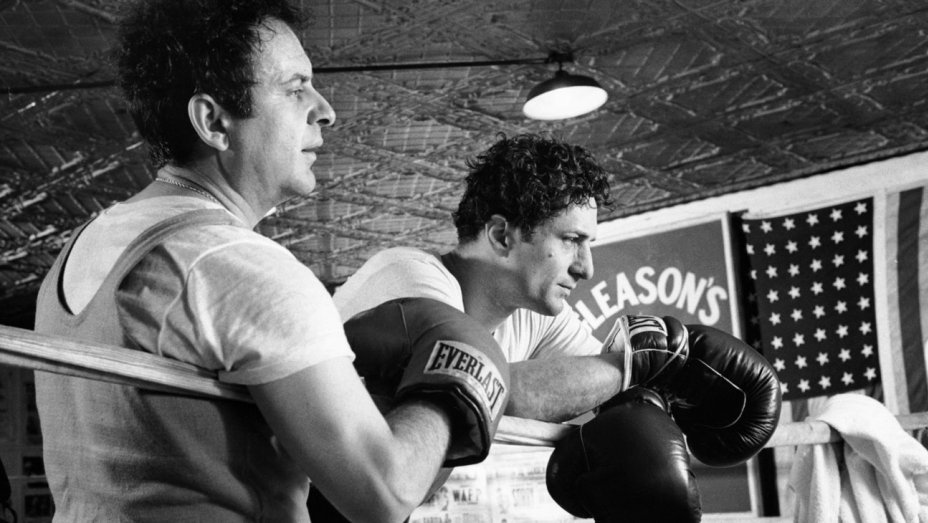
De Niro won his second Oscar playing the lead role, and after appearing in his third film, Joe Pesci gave a scene-stealing performance and arguably the actor’s best effort of all time. De Niro took his craft to the next level with his preparation for the role; he learned the art of boxing so the fight scenes would look realistic and convincing. He trained so well that he fought three professional boxing matches, winning two of them, and he even gained 60 pounds to play a heavier and older version of LaMotta.
De Niro fought hard for many years to bring the story of the turbulent boxer to the big screen and you can feel him becoming Jake Motta. The acclaimed actor accomplished what few actors can, and that’s becoming the character as a whole. We no longer see Robert De Niro playing a role; we only see the character of Jake La Motta.
Cathy Moriarty, who played LaMotta’s wife Vickie, gives a great performance, transforming from a naive teenage girl being courted by the boxer to a grown women fed up and tired of a marriage that’s full of domestic violence. Her performance is subtle yet powerful.
Frank Vincent and Nicholas Colasanto both give realistic portrayals of underworld crime figures that adds to the film’s realism. but the true star of the film is Joe Pesci. His performance is, at times, humorous and brutally honest as his character tries to be the moral compass for his undisciplined older brother.
3. Solid direction
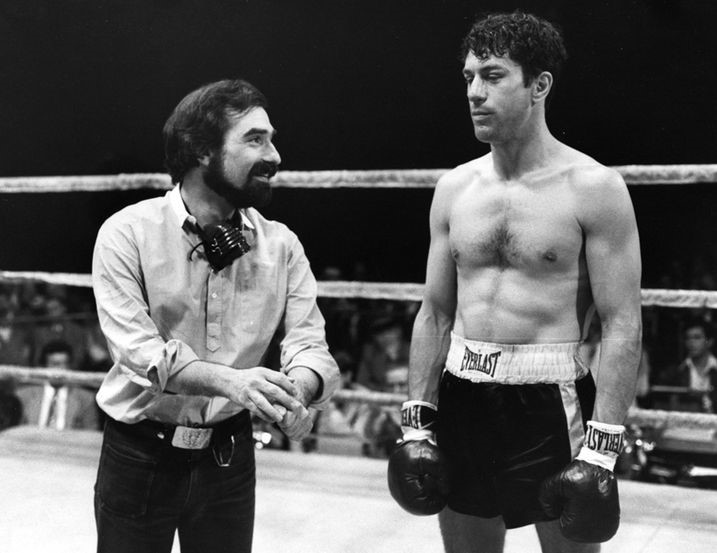
When the screening of “Raging Bull” for the executives at United Artists was over, the theater was in complete silence. There was no applause or validation from those in attendance. It wasn’t until Andy Albeck, the head of United Artists at the time, got up from his seat and walked to the back of the theater to shake the director’s hand and said: “Mr. Scorsese, you are an artist.”
The head of United Artists was right – “Raging Bull” transcended from being just a movie to becoming a piece of art. And like most great artists that create brilliant pieces of art, they often struggle with inner demons before crafting their greatest work, and Scorsese would travel down a similar path.
Prior to making “Raging Bull”, Scorsese’s career and life was spiraling out of control; his drug addiction nearly killed him and his last film, “New York, New York”, put his career in question. After an intervention from De Niro, Scorsese battled his demons and won, and after years of turning down the chance to direct the film, he finally agreed.
He had this to say about the movie: “I was harboring a lot of anger and I think it just explodes in Raging Bull.” And for a film full of anger and violence, it’s often touching and beautiful. Scorsese created thrilling boxing sequences and directed compelling scenes with his actors, bringing a certain realism to the film that still feels raw and honest nearly 40 years after its release.
4. Beautiful black-and-white cinematography

From the very first image of LaMotta shadowboxing in the ring for the opening credits, you knew you were about to watch some of the best black-and-white photography ever captured on film and surprisingly, it was the first time cinematographer Michael Chapman had ever shot a film on black and white.
Chapman worked with Scorsese on the film “Taxi Driver” and said it was liberating working in black and white, because it’s one step removed from reality. This is one of the reasons the film has such a powerful impact – it’s a brilliant combination of realism mixed with surrealism, which is captured in the beautiful impressionistic cinematography. Chapman described “Raging Bull” as Verismo opera; the filmmakers let the camera do all the singing, and the results became a visual masterpiece.
5. Surrealist boxing scenes
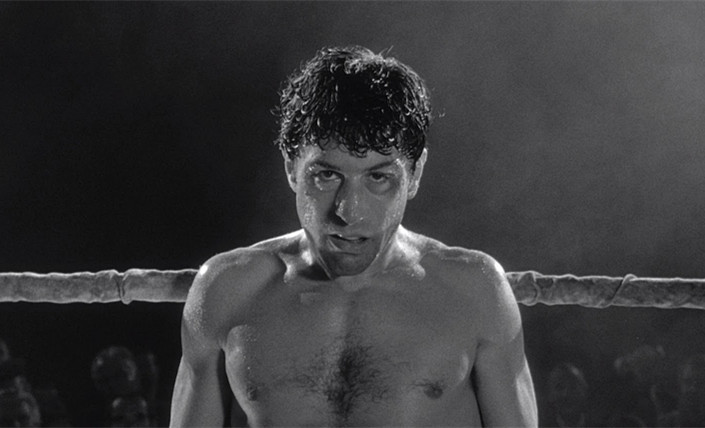
The boxing sequences in “Raging Bull” are mesmerizing because Scorsese didn’t try to recreate what people have observed for years – watching boxing matches on television. Instead, the director created something never before seen. After watching prior boxing films, Scorsese wasn’t impressed with the way they were shot became most times, the camera was outside the ring capturing the POV of the audience watching the match. The director wanted to get inside the ring with the camera.
The actual boxing scenes were filmed first and the filmmakers built several boxing rings, some normal size, and others built larger to capture strange camera angles and the psychological component of fighting in the ring.
All of the fight scenes were extensively choreographed and Scorsese wanted the movement in the fight scenes to be similar to a dance routine. The filmmakers used both handheld and dolly movements inside the ring, and Scorsese wanted the frame rate to change during shots from 24 to 48 to 120 and back again and at any time during the shooting.
Chapman said Scorsese wanted the boxing scenes to be elaborate and stunning because in the ring, LaMotta was king. This was juxtaposed with his real life, which was filmed simply; often times the camera would have a simple set up, nothing fancy, symbolizing how outside of the ring he was far from being a king.
The unsung hero in the movie is film editor Thelma Schoonmaker. Her ability to assemble the surreal boxing scenes is what gives the film its true strength, and juxtaposing the artistic boxing sequences with the more subdued dramatic scenes gives the film a visceral impact.
6. Pulling no punches
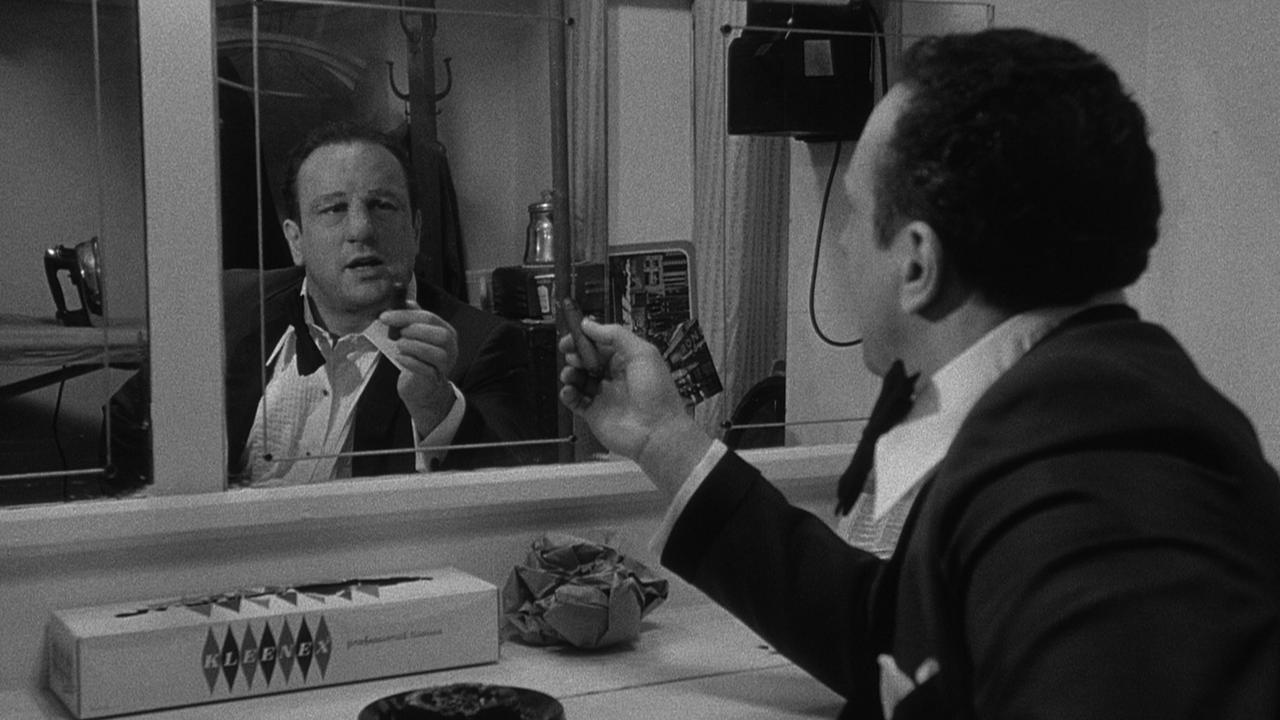
Before the film went into production, the executives at United Artists were reluctant about the material, feeling Jake LaMotta was such unlikable character that it would be hard to find an audience for the film. Several drafts of the screenplay were written before Scorsese convinced Paul Schrader to come aboard on the project.
Schrader could only commit to six months to the project because he was about to start filming “American Gigolo”, and his contribution to the story would prove to be important; in his draft of the screenplay, he introduces LaMotta’s younger brother Joey to the story. When the executives read the new screenplay they were worried the project might receive an X-rating, so De Niro and Scorsese traveled to St.
Martin in the Caribbean so they could concentrate on writing the screenplay without any of the distractions back in New York. Scorsese even commented that the trip to the St. Martin was similar to the spa from Fellini’s “8 ½”, and this time spent in the Caribbean helped rejuvenate the director’s creativity.
Once the film was finally finished and released in theaters, it did modest business at the box office and critics hailed the film as a masterpiece. The New York Times film critic Vincent Canby had this to say about it in a 1980 film review: “It’s exceedingly violent as well as poetic and, finally, humane in the way of unsentimental fiction that understands that a life – any life – can only be appreciated when the darkness that surrounds it is acknowledged.
There’s scarcely a minute in ‘Raging Bull’ that isn’t edged by intimations of mortality. Jake LaMotta, played by Robert De Niro in what may be the performance of his career, is a titanic character, a furious, original, a mean, inarticulate, Bronx-bred fighter whom the movie refuses to explain away in either sociological or psychiatric terms, or even in terms of the Roman Catholicism of his Italian-American heritage. He is propelled not by his milieu, his unruly id or by his guilts, but by something far more mysterious.”
“Raging Bull” pulls no punches in its depiction of violence, both physical and domestic; it shows characters at their worst a world where morality is often forgotten about. It has a main character that few would find appealing, but that’s the genius of Scorsese – he makes us care about these characters, and at the end of the film, we genuinely have compassion after watching LaMotta achieve some sort of redemption.
The film is so realistic at times that you can’t help but become emotionally involved with the material, because there’s an intimacy of the storytelling. Scorsese treats the viewer like an opponent in a boxing ring, being pounded with a story so raw and unflinching that after the movie ends, you can’t help but feel victorious, because watching “Raging Bull” is one of the greatest achievement for any cinephile to experience in their lifetime.
Author Bio: R. Prince is a filmmaker from Harlem, New York and the author of the book How to Roll a Blunt for Dummies.